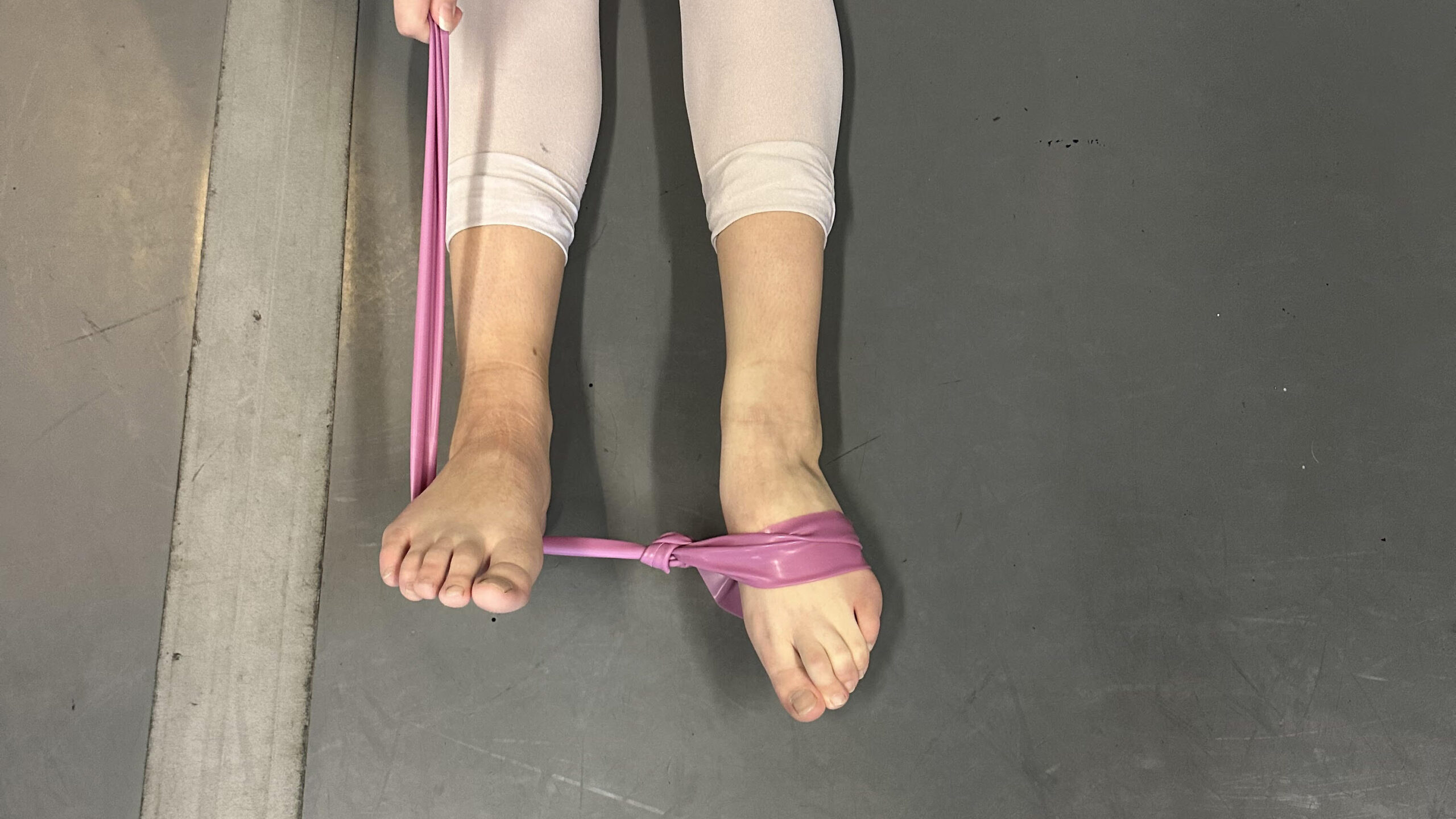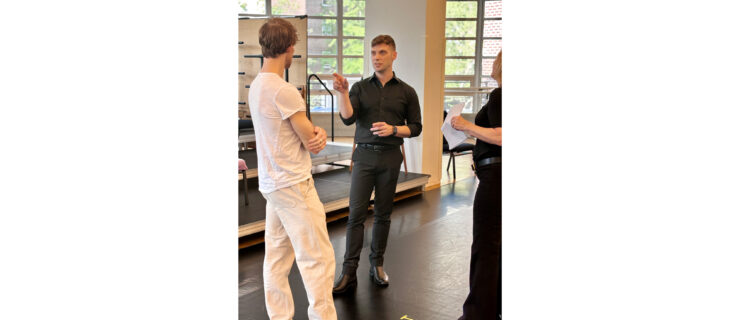Safety Tips for Winged and Sickled Feet
When Ballet Tucson artistic director Margaret Mullin was a high school student, she accidentally landed on a sickled foot during a petit allégro combination, tore four ligaments in her ankle, and spent the next year healing. Although Mullin recovered and went on to a successful performing career with Pacific Northwest Ballet, the early brush with injury provided her with valuable perspective. “I’ve talked to dancers a lot throughout my teaching career and directorship about how much range you have on the outside of your ankle,” she says, “and how important it is to develop strength there.”

Beyond the delicately winged foot that goes in and out of favor in ballet’s arabesque, performers may be asked to wing and/or sickle their feet as part of choreography. While winging (toes pointed outward) and sickling (toes pointed inward) involve relatively small ranges of motion, to execute them safely requires proper strength and an understanding of the anatomy of the foot and ankle.
Building a Foundation
Injuries can occur when a dancer puts weight on a winged or sickled foot, because it impacts the alignment of the ankle and can put undue strain on the ligaments and tendons. The ankle is supported by the strong deltoid ligament on the inside, and three weaker ligaments (the posterior and anterior talofibular and the calcaneofibular) on the outside, explains Dr. Tania Burinskas, a podiatrist and former dancer based in Maryland. Her husband and professional partner, foot and ankle surgeon Dr. Justin Lewis, says, “Those areas on the outside are more prone to damage, and [the injury can be] more catastrophic for a dancer than the deltoid ligament, which is usually pretty strong.”


Because of the risk of injury, it’s important to learn how to support winged and sickled foot positions through both strength and technique. Kelly Ashton Todd, who uses winged and sickled feet as artistic choices in her choreography, recommends first focusing on fundamental elements like turnout and foot articulation. “Having solid technique as a foundation is really important,” she says. “Working on turnout and arch support and going through the foot is an important place to start and get really grounded in, before you add sickles or wings.”
Burinskas encourages dancers to avoid overstretching the area, noting that this can often be a precursor to injury. “You’re going to stretch those tendons that are attached to the muscle, but then if you don’t subsequently strengthen them, you’re going to have a beautiful winged foot in the air, but your supporting foot is going to have those stretched tendons and might not have the strength for stability,” she explains.
Steady Steps
To support winged and sickled foot positions, Mullin emphasizes the importance of cross-training, encouraging dancers to strengthen their glutes. “Once you have that stability at the top of your leg, you gain so much more stability in the lower parts of your leg, too,” she says.
Lewis and Burinskas add that simple exercises like calf raises at the barre and balancing on demi-pointe are crucial for ankle stability as well. They also recommend a series of exercises with a TheraBand to bolster ankle strength (see below).
Mullin has found working with a BAPS (biomechanical ankle platform system) board to be helpful for her own ankle strength. She recommends standing on the device—which is similar to a BOSU ball, albeit much smaller—and moving the ankle in a circle, which helps by strengthening each supporting muscle. She also recommends a stability pad, which is a small, thick piece of foam. Standing on the stability pad, either on one leg or two, can help develop the intrinsic ankle stabilizer muscles. “Developing those little, finite bits of strength is really important as well,” she says.
Todd has found that rolling out the hips, psoas, and IT band has been crucial, because tightness in these areas can affect the kinetic chain and have impacts on the feet. She also uses therapy balls to roll out her feet after a long day of dancing for the same reason. “You have to be doing your physical therapy exercises, rolling out your feet, and strengthening your feet,” she says. “The longevity of a dancer is a forever process.”
Building Strength
Dr. Tania Burinskas, a podiatrist and former dancer, and Dr. Justin Lewis, a foot and ankle surgeon, recommend this exercise to build strength in the muscles that help with winging and sickling:

- Place a looped or knotted TheraBand around your left foot and the other side of the TheraBand under your right foot.
- Hold on to the non-looped portion of the band, adjusting tension as needed.
- Resisting the pull of the TheraBand, wing the left foot, then bring it back to neutral.
- Repeat with the other foot, and in both flexed and pointed positions.





